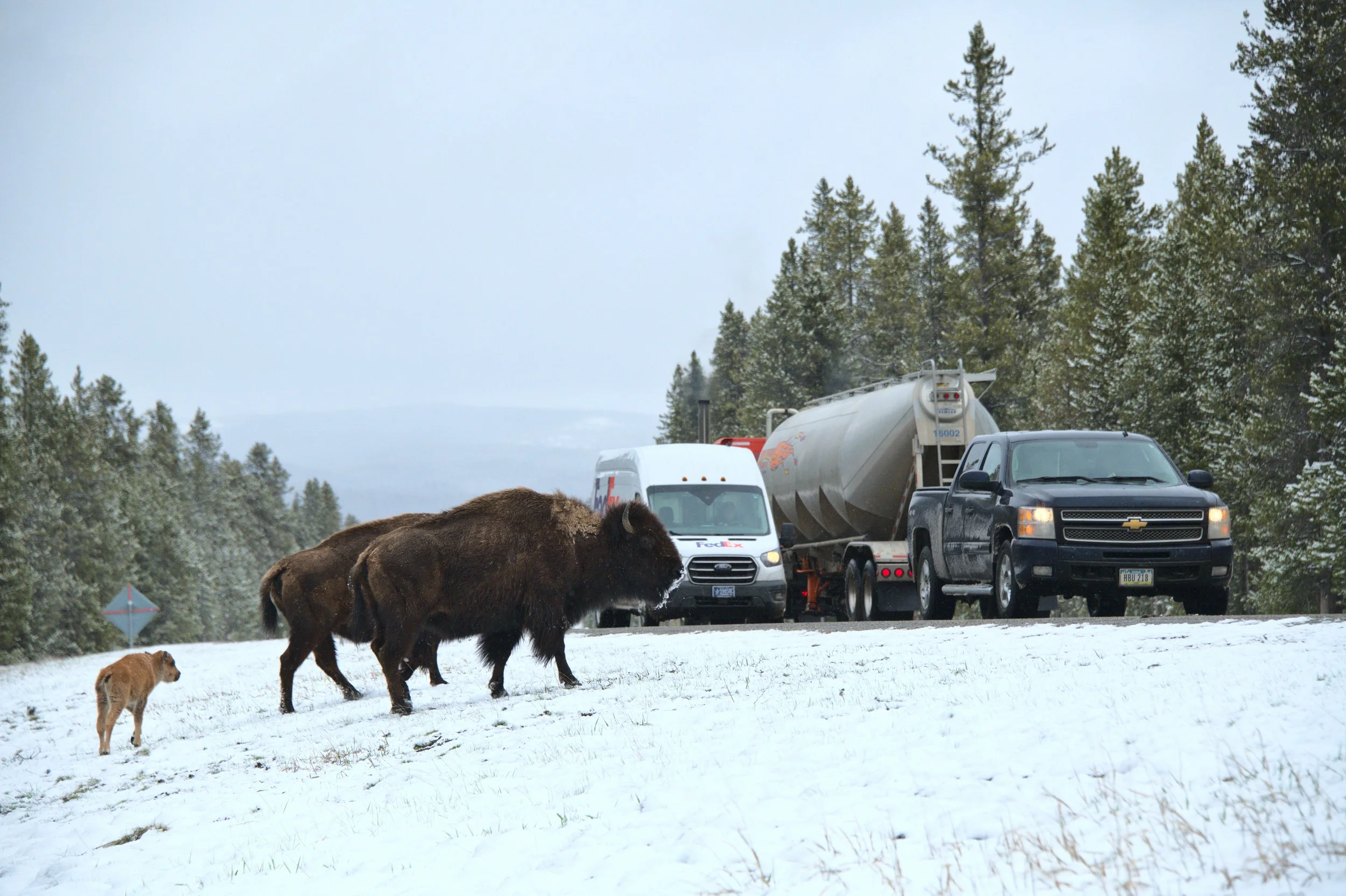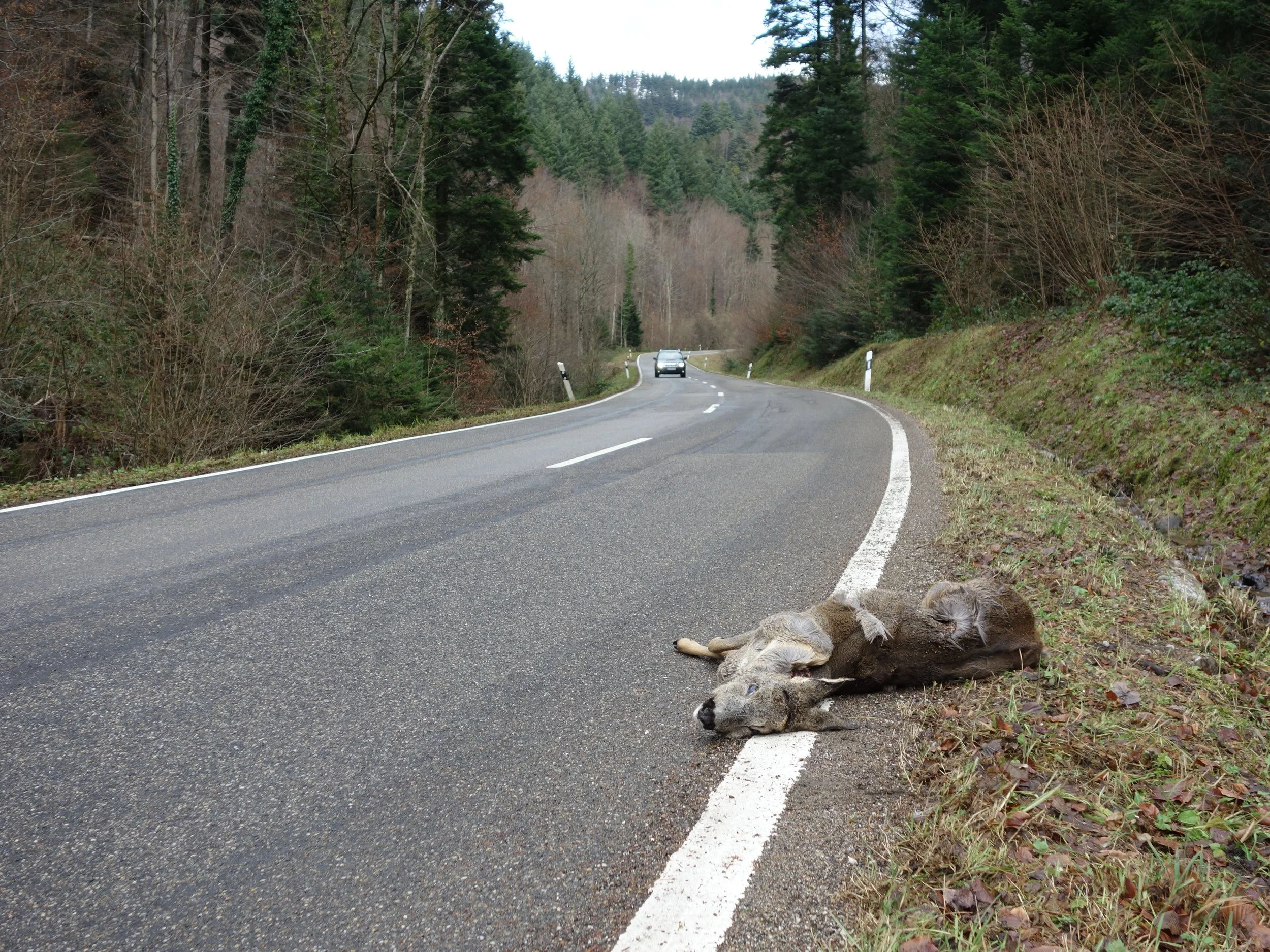
Research
Making scientific research accessible
Here, you’ll find easy-to-read summaries of scientifically rigorous, evidence-based and peer-reviewed publications from around the world to help you better plan, build, and manage ecologically sustainable linear infrastructure.
Research summaries are listed chronologically according to when they were published here.
To find information on a specific topic, please use the SEARCH function below to filter by keywords, including topic, species, location and/or author.
Where bison meet traffic: Understanding migratory movements of bison along roadways and hotspots for Yellowstone wildlife activity
A single large truck killed 13 bison on US Highway 191 in 2023, yet the Greater Yellowstone Ecosystem still lacks any wildlife crossing infrastructure despite decades of mounting collisions. New research has shown where existing highway bridges could be adapted into wildlife corridors, transforming the deadliest stretches of road into safe passages for migrating bison, grizzly bears, and other iconic species.
Establishing wildlife corridors is a key conservation tool in many landscapes
A recent publication claimed that increasing stewardship to ensure landscape permeability is a better approach to achieving conservation outcomes than protecting corridors between protected areas. We argue that the optimal approach depends on the landscape context, conservation goals, and species involved.
The domino effect of roads on biodiversity: How the impacts of wildlife-vehicle collisions propagate through food webs
Our study reveals that roads and traffic not only cause direct wildlife mortality but also destabilise entire ecological networks by altering predator-prey interactions. By mapping high-risk areas for disrupted predator-prey interactions across Europe, we highlight the urgent need for tailored measures to reduce roadkill and preserve the integrity of ecological networks.
Understanding where and when collisions with roe deer and vehicles occur can help to inform mitigation planning
Most wildlife need to cross roads that dissect their habitat to find food and mates, as well as disperse or migrate to new habitats. The ability to successfully cross roads depends on many factors. We figured out that for roe deer, the main issues are road density, traffic volume, habitat abundance and time of year.
Restoring the collapsed iconic wildebeest migration in Kenya’s Masai Mara Ecosystem
The rapid spread of fencing in Kenya’s Masai Mara has disrupted wildlife and livestock movements, threatening both the ecosystem and pastoralist livelihoods and ultimately causing the collapse of the Mara-Loita wildebeest migration. New research highlights how restoring key corridors can reconnect these landscapes, offering mutual benefits while providing a blueprint for planning cost-effective restoration of fragmented ecosystems worldwide.
Incorporating climatic considerations into wildlife crossing planning is essential for the future
In addition to the well-established benefits of wildlife crossing structures in reducing wildlife-vehicle conflict and mitigating fragmentation, these mitigation systems also have the potential to support wildlife in adapting to changing climatic conditions. We offer a practical approach and specific guidance for incorporating climate considerations into transportation project planning.
A simple framework for large-scale road-related risk assessments
Poorly planned or maintained roads can have devastating impacts on ecosystems, threatening biodiversity and fragmenting habitats worldwide. To address this, we developed a simple yet effective method to assess global and regional risks of road-related environmental impacts. By leveraging readily available data on road exposure and species-level susceptibility, our approach provides a practical tool for conservation planning and risk assessment. This accessible method empowers researchers, policymakers, and planners to identify high-risk areas and prioritize interventions—making it both impactful and easy to implement.
“Global Roadkill Data Initiative” provides access to the largest wildlife mortality database
This open-access dataset includes over 200,000 roadkill records voluntarily shared by contributors. While it does not represent a comprehensive global assessment of roadkill incidence, it documents 2,283 species across 54 countries.
The toll of the automobile: A landmark study in road ecology
In 1925, Dayton Stoner conducted what we believe was the first systematic investigation into the ecological impacts of roads. His article offers a historical glimpse into the origins of road ecology, a field that continues to grow in importance a century later.
More night-time traffic equals less bat activity
We know that roads and traffic can put bats at risk but what happens when traffic volumes increase? A study on New Zealand’s long-tailed bats shows that there is real cause for concern.
How well do wildlife crossing structures help animals across roads?
Wildlife crossing structures seem like a simple and attractive solution to help animals across roads. But how well do they actually work? This latest global research summary tried to find out.
Animal Detection and Driver Warning Systems – a potential solution for wildlife-vehicle collisions & loss of landscape connectivity on secondary roads
Animal Detection and Driver Warning Systems may be an appropriate solution where over- and underpasses are not feasible along secondary roads. In this pilot, we found a 66% reduction in wildlife-vehicle collisions at a road section equipped with an Animal Detection and Driver Warning System in southern Sweden.
In search of the ideal underpass for wild animals
Designing crossing structures for wildlife underneath roads is a challenge because species may respond differently to factors such as nearby habitat or crossing-structure dimensions. Here we show that large, open crossing structures along natural travel corridors accommodate the highest diversity of large and medium-sized mammals.
Priority regions and species to study and protect from road impacts in Latin America
We identified key areas and species that should be prioritized for conservation and research related to road impacts. In Latin America, vultures, armadillos, cuckoos and shrew opossums need protection, and Central America and northern South America are the regions with the greatest need for research.
More than 10,000 tons of wild mammals are killed on Brazilian roads yearly: Assessing the impacts and conservation implications of wildlife-vehicle collisions
Nearly 9 million medium- and large-sized mammals (>1kg) could be killed on Brazilian roads each year, representing an estimated wildlife biomass of over 10,000 tons. Mortality from roads is a major threat to wildlife conservation in Brazil, and further research and mitigation is urgently needed to avoid species extinction.
Barriers to fauna-sensitive road design and how we can overcome them
Our recent survey of the transport planning and policy literature revealed substantial barriers that obstruct the consideration and implementation of fauna-sensitive road design (FSRD). Although the review identified several ecological support tools that could be useful to transport practitioners, these are of limited use without ‘action-oriented’ research to support their adoption and application of FSRD more broadly.
Roadkill: vehicle collisions may be threatening the survival of some mammal populations
Mammal roadkill can negatively affect wildlife populations but exactly how it does so remains unclear. This study reviewed globally published studies to examine how roadkill affects populations.
A cost-effective approach to incorporate landscape connectivity in Environmental Impact Assessments
We present a simple framework for a landscape level approach to identify species road crossing needs and priority sites for implementation. Our approach permits pro-active, scenario-based planning for wildlife friendlier roads that can easily be incorporated into EIAs.
Improving the design of road ecology research
Our recent survey of the literature revealed a need for significant improvement in how road ecology studies should be designed and conducted if we are to achieve real-world impact beyond the research. We developed a framework that aims to assist road ecologists and transport practitioners in conducting research that will make meaningful contributions to the evolution of the field and have real-world applications.





















